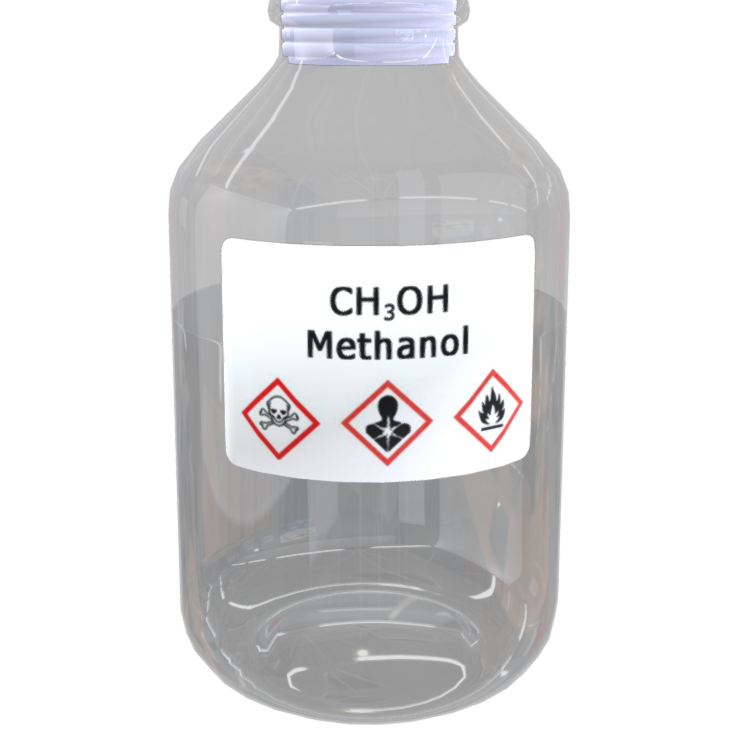Methanol (CH₃OH), also known as methyl alcohol, is a light, volatile, colorless liquid that is the simplest form of alcohol. It has a distinctive, slightly sweet odor and is highly flammable. Methanol is used extensively as a chemical feedstock, solvent, and fuel.
Key Properties of Methanol:
- Chemical Formula: CH₃OH
- Molecular Weight: 32.04 g/mol
- Boiling Point: 64.7°C (148.5°F)
- Melting Point: -97.6°C (-143.7°F)
- Density: 0.7918 g/cm³ at 20°C
- Flammability: Highly flammable, burns with an almost invisible flame.
Production of Methanol:
Methanol is typically produced through the steam reforming of natural gas, where methane (CH₄) is reacted with steam to produce synthesis gas (a mixture of carbon monoxide and hydrogen). The synthesis gas is then catalytically converted into methanol.
CH4+H2O→CO+3H2CH₄ + H₂O \rightarrow CO + 3H₂CH4+H2O→CO+3H2 CO+2H2→CH3OHCO + 2H₂ \rightarrow CH₃OHCO+2H2→CH3OH
Methanol can also be produced from biomass (bio-methanol), coal, or even captured carbon dioxide, though natural gas remains the most common feedstock.
Common Uses of Methanol:
- Fuel:
- Methanol is used as an alternative fuel in several forms:
- Methanol fuel: Pure methanol or methanol blends can be used as fuel in internal combustion engines.
- Biodiesel production: Methanol is a key ingredient in the transesterification process to produce biodiesel from vegetable oils or animal fats.
- Fuel cells: Direct methanol fuel cells (DMFCs) use methanol as a fuel to generate electricity in portable power applications.
- Methanol is used as an alternative fuel in several forms:
- Chemical Feedstock:
- Methanol is a precursor for a variety of chemicals:
- Formaldehyde: Used in the production of resins, plastics, and adhesives.
- Acetic Acid: Used in the manufacture of textiles, films, and synthetic fibers.
- Methyl tert-butyl ether (MTBE): A gasoline additive that increases the octane rating of fuel.
- Methanol is a precursor for a variety of chemicals:
- Solvent:
- Methanol is used as a solvent in the production of paints, varnishes, resins, and dyes due to its ability to dissolve a wide range of substances.
- Antifreeze:
- Methanol is often used as an antifreeze agent in windshield washer fluid, de-icing fluids for vehicles and aircraft, and natural gas pipelines.
- Laboratory Use:
- Methanol is used as a solvent in laboratory settings, particularly in chromatography and spectroscopy. It is also a common reagent in organic chemistry.
- Denaturant for Ethanol:
- Methanol is added to ethanol to “denature” it, making it unfit for human consumption. This allows ethanol to be sold without alcohol taxes for industrial uses.
Advantages of Methanol:
- Renewable Production Potential: Methanol can be produced from renewable resources such as biomass, waste carbon dioxide, and hydrogen, making it a potential sustainable fuel.
- Energy Carrier: Methanol can be used to store and transport energy, especially for fuel cell applications.
- High Octane Rating: Methanol has a high octane rating, making it useful as a fuel additive to improve engine performance.
Methanol’s versatility makes it valuable in a wide range of industries, from fuels to chemicals.










